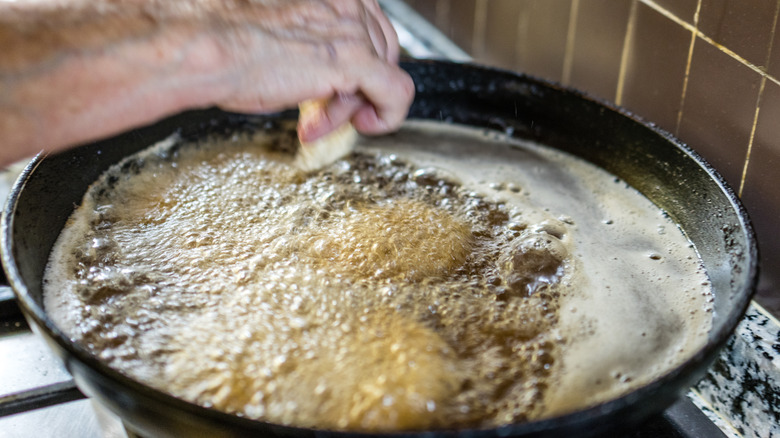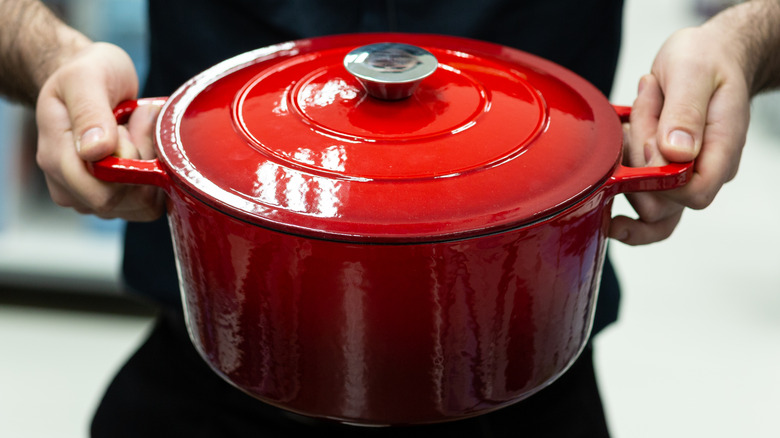The Easiest Way To Make Deep-Fried Food At Home Is Not In A Frying Pan
We may receive a commission on purchases made from links.
Deep frying at home is the only way to make culinary delights like the crunchy chimichanga-style Chipotle burrito. However, this high-temperature cooking method can be intimidating for many home chefs — we've probably all heard horror stories about dangerous deep-frying disasters. Luckily, home deep frying can be much safer and easier with the right setup. It seems logical that a frying pan would be the best vessel for making deep-fried food (after all, it has fry in the name). However, pan frying and deep frying are very different and, according to Scott Groth, professional chef and creator of I'd Rather Be a Chef, frying pans are actually not so hot for home deep frying.
"Skillets have low walls, which means oil spatters everywhere," Groth said. "It often leaves the stovetop a complete mess." Those oil spatters aren't just annoying, they can also be dangerous, Groth warned. If an oil spatter lands on a burner or open flame it can ignite and flare, and if you throw water on it (often an instinctive reaction) the water explodes into steam almost instantly. "That steam blasts the hot oil into the air as a fine mist that ignites immediately, creating a fireball." This is both terrifying and extremely dangerous and is clearly best avoided.
What is the best way to make deep-fried food at home?
Another challenge when deep-frying in a pan is maintaining the correct temperature. "There is a very narrow window where the oil moves from the proper temperature to overheating," Scott Groth noted. Home chefs will likely be tempted to overcrowd the pan, he added, as "it seems like it will get the job done faster and with less mess." In reality, overcrowding rapidly lowers the oil temperature, leading to greasy, soggy food instead of crispy, perfectly fried treats.
For all these reasons, a frying pan is not the best tool for producing tasty deep-fried goodies at home. Instead, Groth suggests using one of our favorite versatile articles of cookware. "A Dutch oven is my go-to for deep frying at home," he said. "The tall sides mean way less splatter and the thick walls retain heat amazingly well, so the oil stays at a stable temperature even when cold food is dropped in. This helps breading stay intact instead of sloughing off [...] More depth also means you're not flipping food in cramped quarters, which makes for a cleaner, safer fry."
Groth recommends opting for an enameled cast iron Dutch oven, and completely avoiding aluminum or ceramic –- his favorite is this Staub Cast Iron 7-qt Round Cocotte. With the help of a Dutch oven, you'll be whipping up perfect tater tots and game-changing crispy waffles with no sweat.

